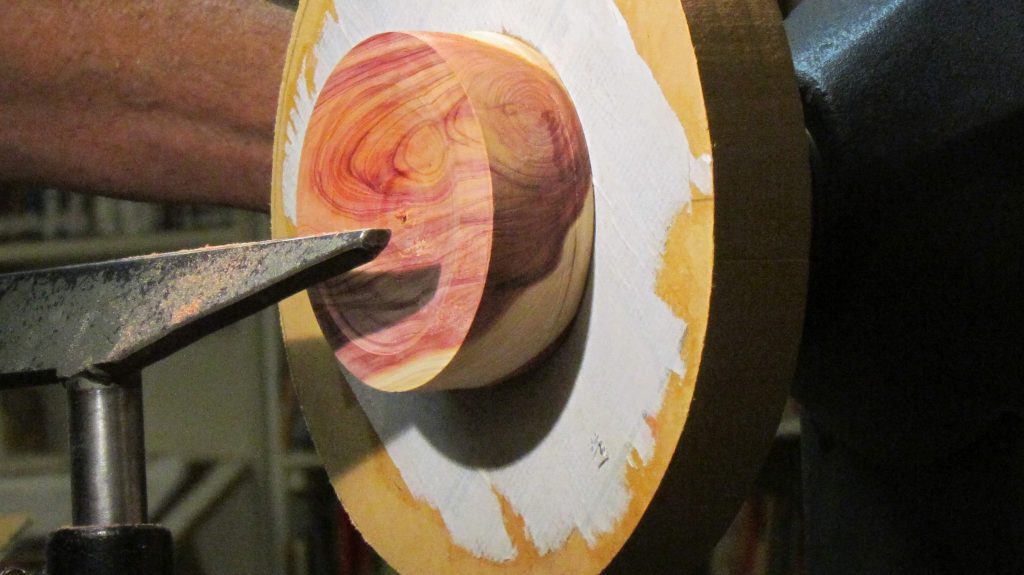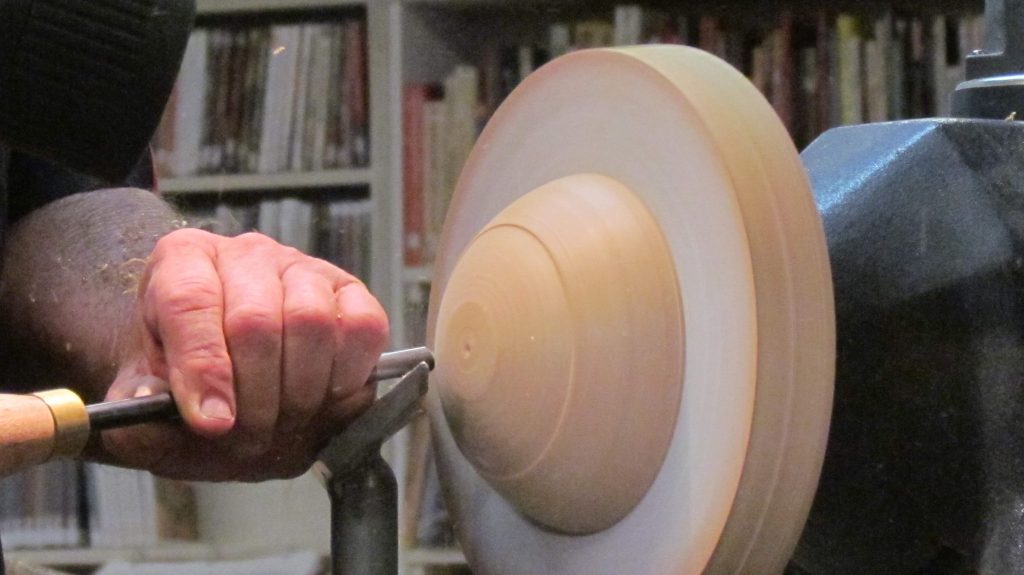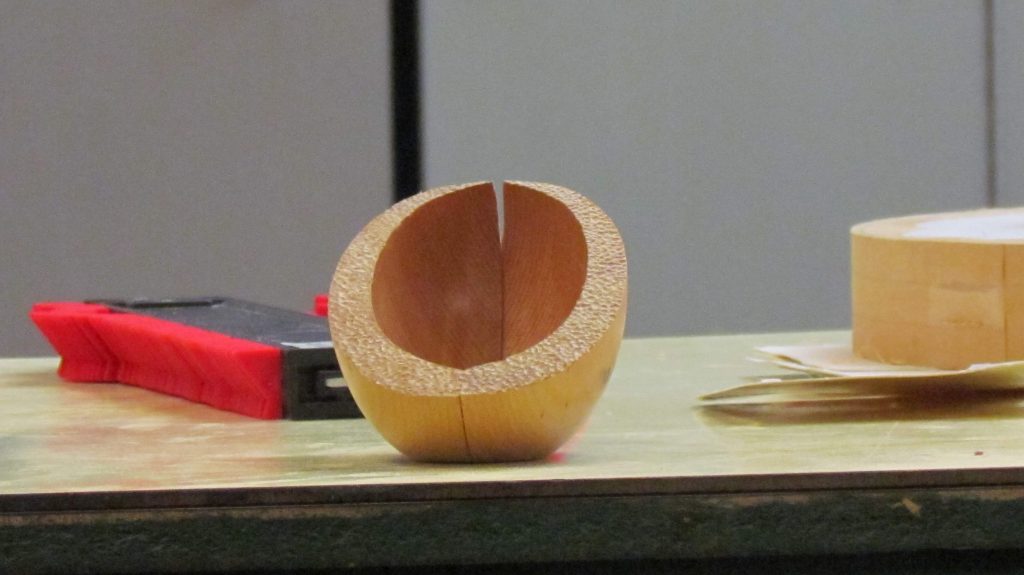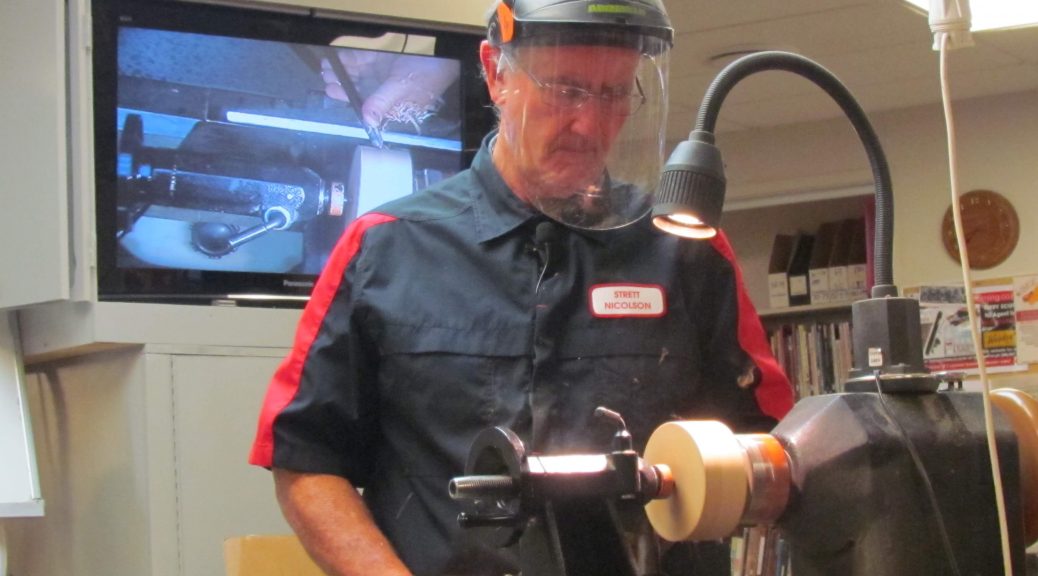Club Meeting 20 February 2019
Reported by Murray Wilton
Photos Ross Johnson
Strett wanted a new challenge, to move out of his comfort zone, so he chose a fairly complex bowl-turning project he found in a magazine. Regrettably, when he came to start the project he couldn’t find the recipe and had to rely on his memory, which must be quite good because he managed the presentation with suitable aplomb.
If newer members and beginners, including the reporter, were puzzled by some of what was going on, at least they learned some valuable lessons on alternative ways to mount their work. In his efforts to avoid mounting on a faceplate with inevitable screw holes that are hard to eliminate, Strett turned to the age-old glue-and- paper-gasket method. First he made an mdf mount, screwed with self-tapping wood-screws to a faceplate and rounded to about 200 mm diameter.
The alternative of a expanding jaws into a hole in the MDF was discussed, the audience questioned the reliability of using mdf in this way, as it is likely to delaminate,
For this project the faceplate timber and the work piece must be perfectly flat, so ensure the faces are flat before proceeding. Remove the mdf or timber mount from the faceplate. Use a paper gasket (120 gsm copy paper best as newsprint will soak up the glue) and apply glue to each side. Strett uses Aquadhere glue. Bring the faceplate timber and the work piece together and apply pressure in a vice or clamp of some sort and leave to dry overnight.

Use a centre-finder to locate the centre of the blank. Bring the tailstock live centre up against it. Squeeze the blank and mount against the chuck and, working gently so that it will stay in place, round it off. All this so screw holes are not required in the work piece.

Locate the mount in a chuck using the spigot cut earlier and begin hollowing out the bowl, leaving an outside flat edge of 5mm. Ensure the hollowing leaves at least 6 to 7 mm at the bottom. Use a contour gauge (available from Machinery Co.) to measure the inside shape of the bowl and make a template. (Some turners use the template method for all their bowl-turning as it removes guesswork.) Remove bowl from the paper gasket and remount on another faceplate blank as above. When dry mount on a chuck and start shaping the outside of the bowl, frequently checking with the template to ensure the bowl sides are of even thickness.
Finding a nail in the bowl led to a slight hiatus as various audience members gave advice on dental extraction procedures to eliminate the nail.

Once the correct shape is achieved Strett completes all finishing work before splitting the bowl off the faceplate. He then cuts the bowl in half with a bandsaw and re-glues to form an almond-shaped offset bowl.
Great demo, although it left some of the audience baffled by science, smoke and mirrors.
